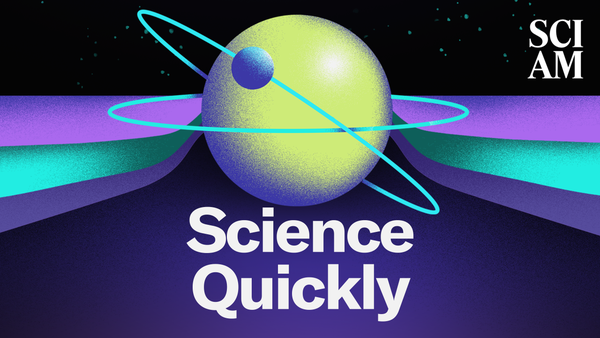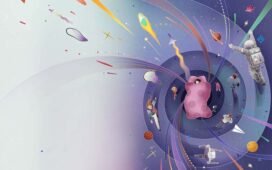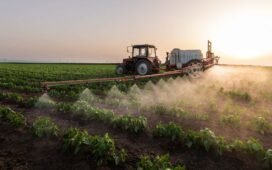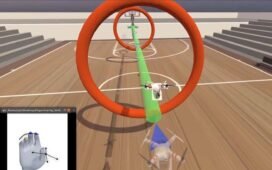Hurricane Milton Delays Launch of Europa Clipper, and Science Nobel Awards Highlight AI
A roundup of the science Nobels, the latest COVID updates and the Europa Clipper launch delay.
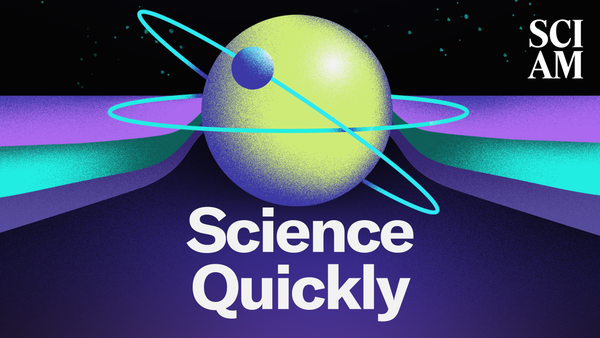
Anaissa Ruiz Tejada/Scientific American
Rachel Feltman: Happy Monday, listeners! Let’s get the week started by catching up on some of the latest science news. For Scientific American’s Science Quickly, I’m Rachel Feltman.
The winners of the 2024 Nobel Prizes were announced last week, so let’s start with a quick laureate rundown.
Last Monday the Nobel Prize in Physiology or Medicine went to Victor Ambros and Gary Ruvkun for the “discovery of microRNA and its role in post-transcriptional gene regulation.” The small snippets of RNA molecules known as microRNA help control how our genes are expressed. Here’s a little primer for context: DNA is of course the molecule that carries our genetic code. RNA, which is short for ribonucleic acid, is chemically similar to DNA, but it usually comes in a single strand instead of that iconic little double helix. The molecules also serve different biological functions. DNA stays put within the nucleus of our cells, but it sends out strands of RNA with some of its genetic code so those instructions can actually get relayed to the parts of the cell that make proteins. Messenger RNA, or mRNA, which got a nod in last year’s Nobel Prize in this category thanks to its use in COVID vaccines, is the type of RNA that actually carries these protein-coding instructions. MicroRNA helps control gene expression by binding with messenger RNA and keeping it from delivering its protein-production message.
On supporting science journalism
If you’re enjoying this article, consider supporting our award-winning journalism by subscribing. By purchasing a subscription you are helping to ensure the future of impactful stories about the discoveries and ideas shaping our world today.
Let’s keep moving right along to the Nobel Prize in Physics, which went to John Hopfield and Geoffrey Hinton for their work in machine learning. Inspired by the way the human brain uses neurons linked by synapses to retain and recall information, Hopfield designed an artificial neural network in 1982. In our brains, the connections between individual neurons can grow stronger or weaker depending on our thinking patterns, and similarly the nodes in artificial neural networks are trained to associate more strongly with certain other nodes in the system based on patterns learned over time. Hinton used Hopfield’s work as a starting point to create a new neural network of his own. Collectively, their work helped set the stage for modern-day machine learning and basically everything we refer to as artificial intelligence. It’s worth noting that Hinton, often called the “godfather of AI,” is now a vocal advocate for caution when it comes to the development and application of artificial intelligence. We’ll be talking more about AI —and how it’s factoring into the 2024 election—on this Friday’s episode, so stay tuned for that.
Speaking of AI, it also takes center stage in this year’s Nobel for Chemistry. One half of the prize was awarded last Wednesday to Demis Hassabis, CEO of Google’s AI research subsidiary Google DeepMind, as well as his colleague John Jumper, for their use of artificial intelligence in untangling the mysteries of three-dimensional protein structures. David Baker took the other half of the prize for developing computational tools that allow scientists to design entirely new proteins.
Scientists have understood since the 1960s that the complex 3D shapes of the proteins that make life possible are baked in based on the order of the amino acid building blocks within them. There are a mind-boggling number of theoretical shapes that the strings of amino acids that make up proteins could fold into—if these chains folded randomly, they’d spend more time than our universe has been around just brute-forcing their way into the correct shape. But inside a cell the process can take less than a second. That means amino acid sequences must have folding instructions encoded within them, which means we should be able to figure out the structure of a folded protein based on its building blocks alone. In 2018 DeepMind’s protein-folding model AlphaFold blew existing methods for protein-folding prediction out of the water, but it was still far from perfect. Then in 2020, when Jumper’s contributions to the project yielded a new version called AlphaFold2, the model managed to predict protein shapes with stunning accuracy.
As for Baker, back in the 90s he designed a computer software called Rosetta—one of those methods that AlphaFold would eventually one-up. But his work took him beyond the quest to understand protein folding. In 2003 he showed that Rosetta could be used to design new proteins with new functions. And a few years ago, inspired by AlphaFold2’s success he added an AI model into the mix and absolutely turbocharged the protein creation process.
That’s all for Nobel news this week. Now let’s look into some COVID updates.
A study published last Wednesday suggests that COVID could up the risk of heart attacks and strokes even years after the infection itself. Using a U.K. dataset of around 250,000 people, researchers found that people who contracted COVID before vaccines became available had more than twice the risk of a heart attack, stroke or death for at least three years afterward, with is as long as they tracked them, with seemingly no decline in risk over time. Hospitalization for COVID drove that increase in risk up even higher. So if you haven’t gotten your latest COVID booster yet, consider this your reminder to get the jab ASAP and get that flu shot while you are at it.
Last Wednesday we had SciAm editor Andrea Thompson on the pod to tell us about the shifting landscape of hurricane season in the wake of the climate crisis. And I wish that episode hadn’t turned out to be quite so topical. Hurricane Milton made landfall later that same day, slamming into the western coast of Florida as a Category 3 storm. At least 19 tornadoes hit the state that day, according to Florida Gov. Ron DeSantis, and as of the time of this recording on Friday, millions of people remain without power. Though the storm weakened as it made its way across the state, it maintained its hurricane status for long enough to thrash the eastern coast of Florida on its way out into the Atlantic on Thursday.
While officials say the damage and threat to life was not as extreme as it could have been, Milton was an alarming storm. It marked the third hurricane to make landfall in Florida this season, and the fifth hurricane to make landfall on the Gulf Coast in 2024. That’s pretty close to a record: we’ve only hit five Gulf hurricanes in a year a couple times before, in 2005 and 2020, and we haven’t seen a higher number of storms hit the area since 1886. Milton’s maximum sustained wind speed of 180 mph makes it reportedly the strongest hurricane to hit the Gulf of Mexico this late in the season, and it’s tied for the sixth strongest storm by wind speed ever recorded in the Atlantic basin.
Speaking of Milton, the hurricane meant NASA had to scrub the October 10 launch of its highly anticipated Europa Clipper mission on SpaceX’s Falcon Heavy rocket. Once it launches Europa Clipper will spend about five and a half years making its way to the Jupiter system. The hope is that Clipper will determine the habitability of Jupiter’s moon Europa, which is thought to have an ocean more than twice the volume of all of Earth’s combined. To protect itself from the high levels of radiation surrounding Jupiter and its moons, Clipper will make 49 quick flybys of Europa to collect information before retreating to process data and send messages back to Earth. The spacecraft’s launch window is open until early November, so hopefully NASA manages to get it off the ground soon.
That’s all for this week’s science news roundup. We’ll be back on Wednesday to talk to a physician who is helping her colleagues learn to leave their biases out of their bedside manner. And on Friday we’ll be chatting with SciAm’s own Ben Guarino about how the 2024 election could impact the future of AI—and how AI could influence the outcome of the election.
Science Quickly is produced by me, Rachel Feltman, along with Fonda Mwangi, Kelso Harper, Madison Goldberg and Jeff DelViscio. This episode was edited by Anaissa Ruiz Tejada. Shayna Posses and Aaron Shattuck fact-check our show. Our theme music was composed by Dominic Smith. Subscribe to Scientific American for more up-to-date and in-depth science news.
For Scientific American, this is Rachel Feltman. Have a great week!

